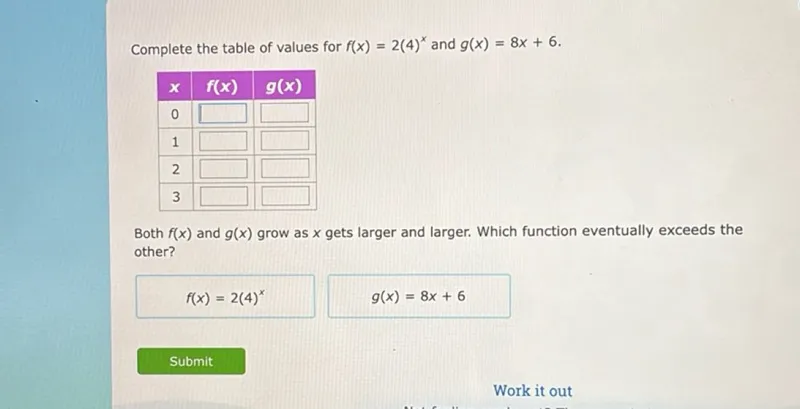Questions: Complete the table of values for f(x)=2(4)^x and g(x)=8x+6. x, f(x), g(x) 0, square, square 1, square, square 2, square, square 3, square, square Both f(x) and g(x) grow as x gets larger and larger. Which function eventually exceeds the other? f(x)=2(4)^x g(x)=8x+6

Transcript text: Complete the table of values for $f(x)=2(4)^{x}$ and $g(x)=8 x+6$.
\begin{tabular}{|c|l|l|}
\hline $\boldsymbol{x}$ & $\boldsymbol{f ( x )}$ & $\boldsymbol{g ( x )}$ \\
\hline $\mathbf{0}$ & $\square$ & $\square$ \\
\hline 1 & $\square$ & $\square$ \\
\hline 2 & $\square$ & $\square$ \\
\hline 3 & $\square$ & $\square$ \\
\hline
\end{tabular}
Both $f(x)$ and $g(x)$ grow as $x$ gets larger and larger. Which function eventually exceeds the other?
$f(x)=2(4)^{x}$
$g(x)=8 x+6$
Submit
Work it out





